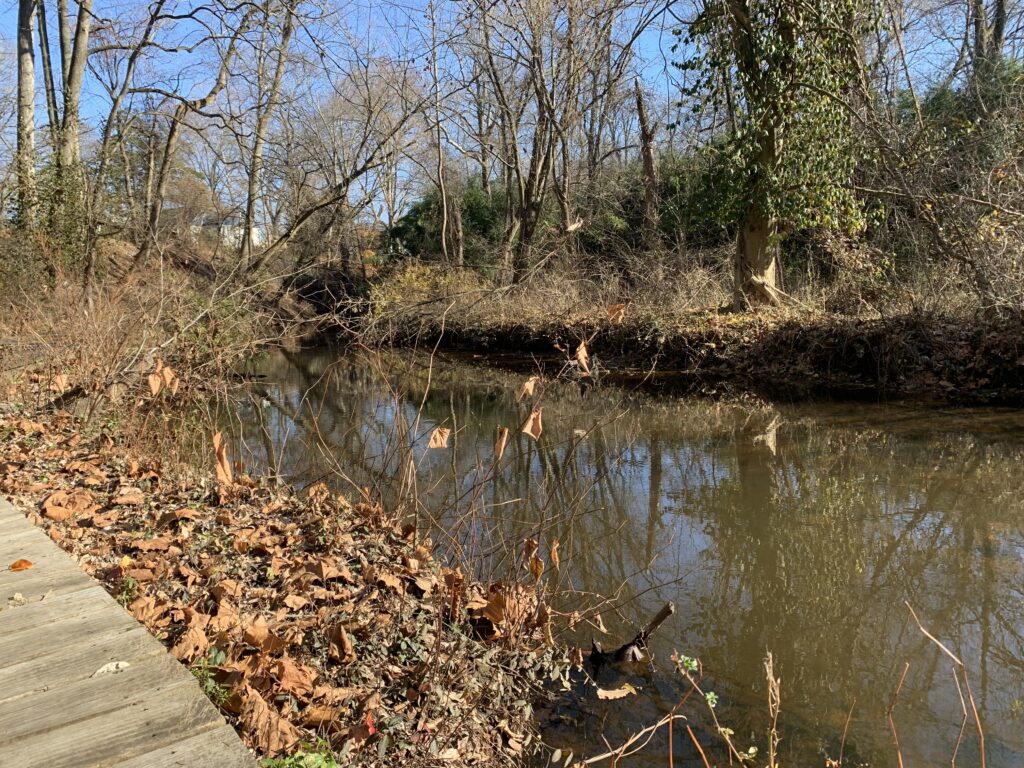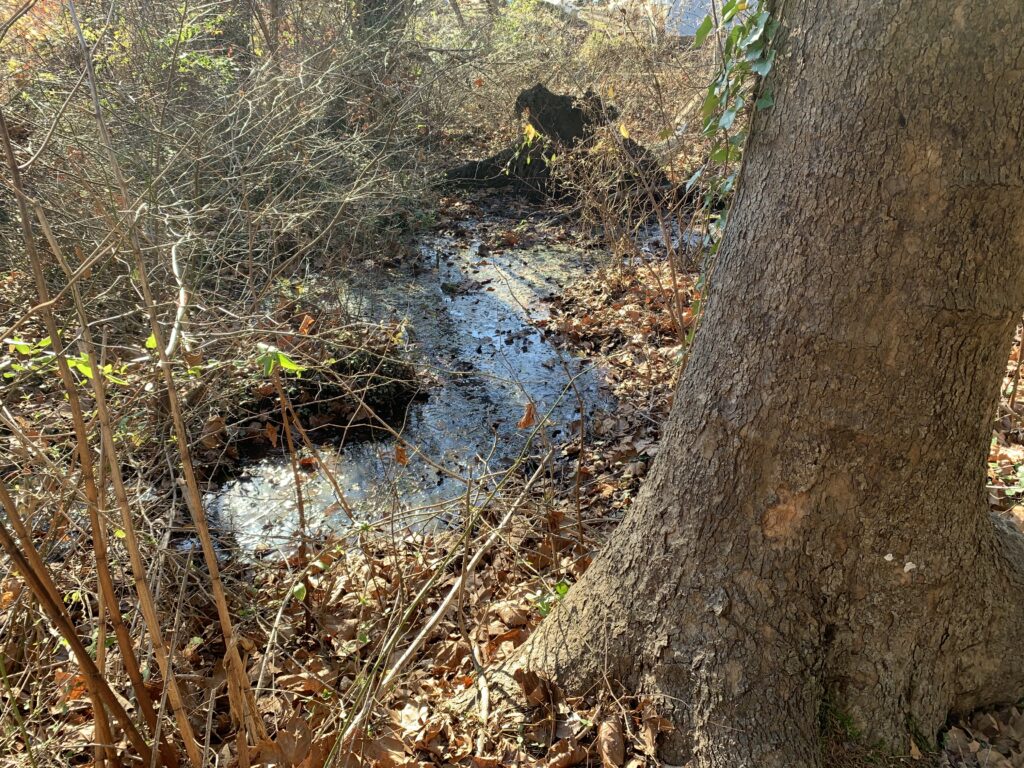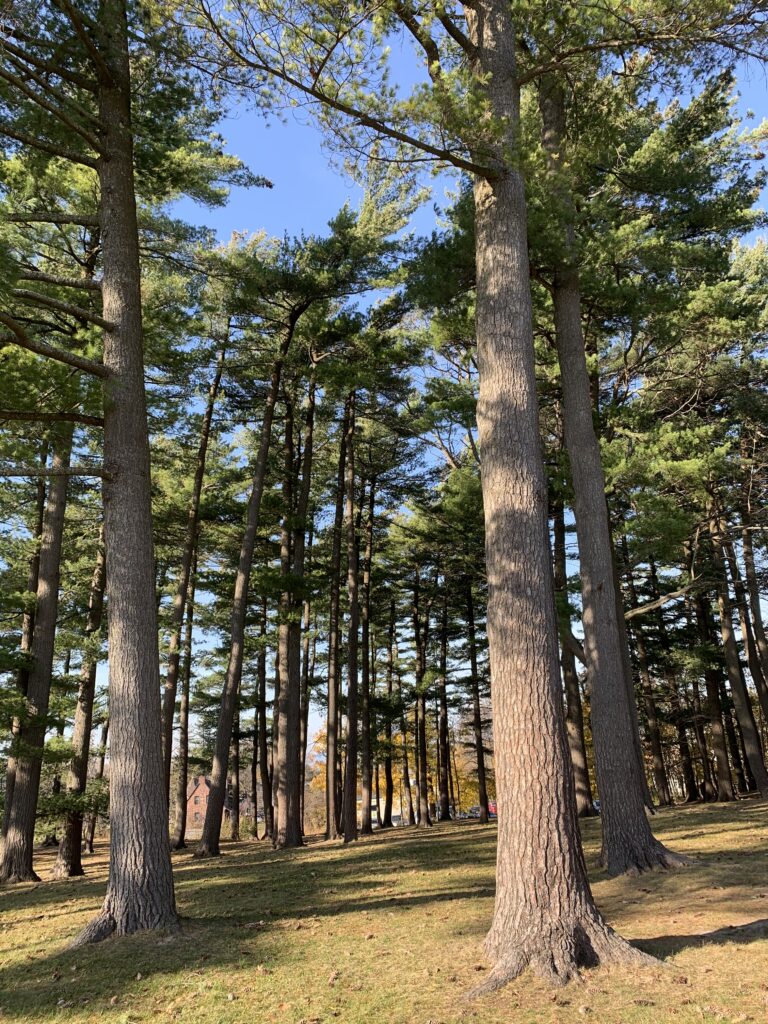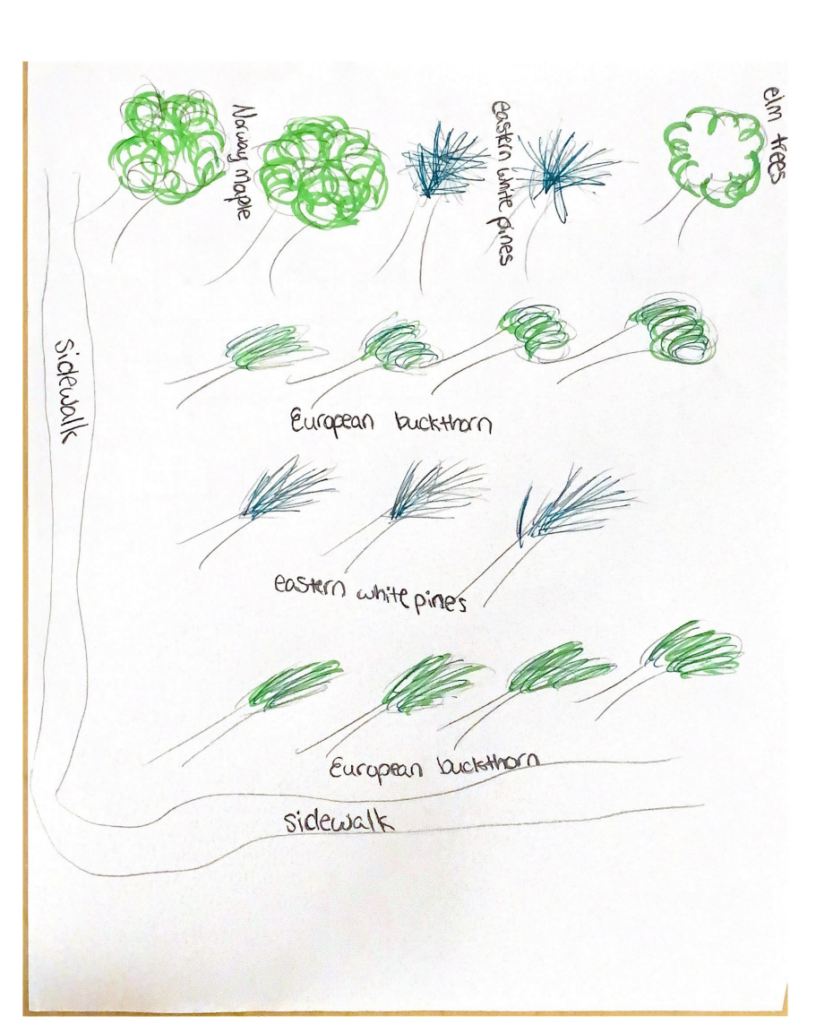While I could not find too much information regarding the human history at my specific location of Redstone Pines on UVM campus, I do have quite a bit of knowledge of the human history of my place I visited over Thanksgiving break.
In 1913, Laurel Springs became a town in south Jersey, about 15 miles east of Philadelphia. It was known at the time for its lake resort getaway on Laurel Lake. Although this town has about 2,000 people now and is only about half a square mile, it’s railroad helped to bring visitors attracted to a lake vacation. In 1878, The Crystal Inn was in business, allowing more visitors to this area for swimming, boating, and fishing. There are springs all around this tiny area of nature situated in the middle of a couple of towns, that contained pickerel, bass, catfish, sunfish, perch, and snappers. As well as summer enjoyment on the lake, the cold temperatures in the winter allowed for the lake to freeze and people to ice skate! Unfortunately now, climate change has made a large impact on this area in New Jersey, with very little snow for the past five years, and pollution has caused a decrease in the diversity of organisms within the lake.
Along with the general vacationing history of Crystal Springs, it also had another use for someone special. Walt Whitman (1819-1892), an influential American poet, spent a few of his summers in Laurel Springs, visiting Crystal Springs and Laurel Lake. Between 1876 and 1884, he would visit Stafford Farm located in town, and on his visits to Crystal Springs, he gained inspiration for two of his most famous poems: “Leaves of Grass” and “Specimen Days.” Parts of this is seen in this photo below:
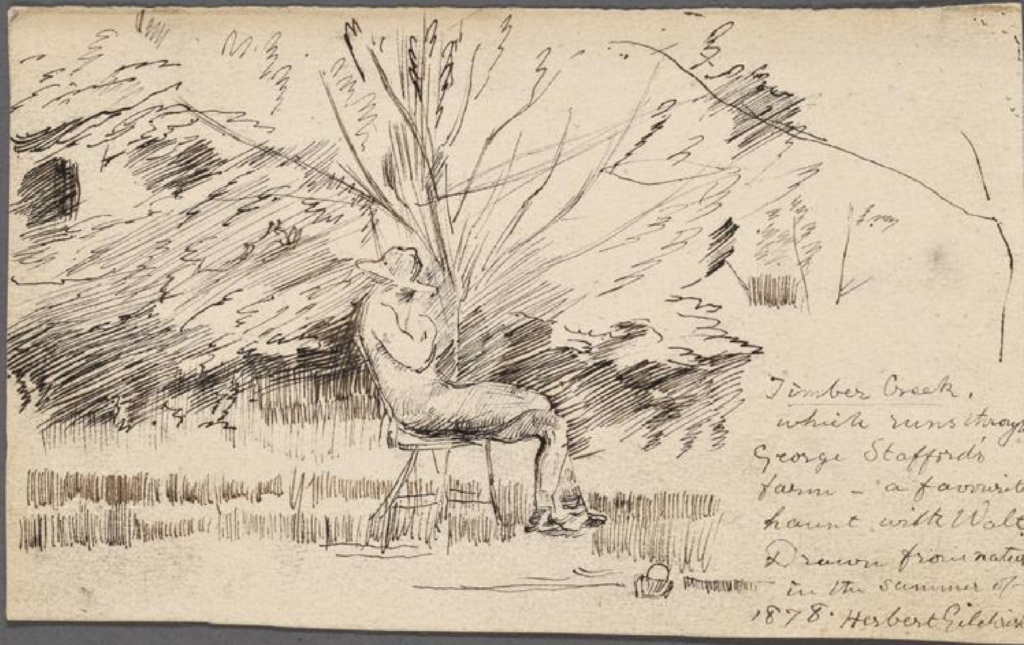
According to Whitman, Laurel Lake was “the
prettiest lake in: either America or Europe.” Unfortunately, as someone who grew up in this town for 19 years, I do not believe any person on Earth would describe Laurel Lake as that due to human interference and neglectfulness.
Although this town and its natural area have a strong human history and Crystal Springs is now a preserved land through Camden County, there is so much work to be done in order to restore the beauty of this place. South Jersey and the suburbs of Philadelphia are so densely populated, that the thought of nature seems to have been forgotten when these towns and farms were built within the last two centuries. Now, humans do not think of Laurel Springs, NJ as a resort town nor can they even go swimming in the lake due to mass amounts of pollution. There are small boardwalks and trails throughout Crystal Springs today that were put in place for the centennial anniversary of the town in 2013, actually by my father, Mike Brown! He tried to tie together the impact Walt Whitman had on this town through quotes of his on the boardwalks and cleaning and maintaining a healthier environment there. These are some photos of what Crystal Springs looks like today!

This photo above is where Walt Whitman would sometimes shower to be more with nature!


Citation:
The Borough of Laurel Springs. Whitman History (1). Retrieved from https://www.laurelsprings-nj.com/home/pages/laurel-springs-history.

